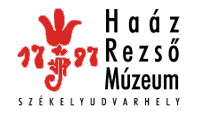Kovács Petronella (szerk.): Isis - Erdélyi magyar restaurátor füzetek 16. (Székelyudvarhely, 2016)
Sor Zita: Digitális nyomatok a gyűjteményekben
made by themselves, it was bought by them. All the glassworks produced glasses with different properties. The quality of the glass was determined by the composition of raw materials used for the melting. Sand was the most important component, and its contaminants modified the properties of the glass greatly. The place of origin of the sand and the characteristics of the other components can be identified by nanotechnological analysis, and from the findings of comparative investigation the date of manufacture can be concluded. The metal cames were made by the glassworkers, so the composition of the lead, tin and the solders are individual, it is suitable for the identification of the workshop. In the second half of the 19th century around the central area of the Carpathian basin, the windows with simple geometric subdivision were replaced with stained glass windows in the catholic churches, according to the current European public taste. This process happened in Transylvania and in the Partium as well. In the churches of reform religions the attitude was different. In that unsophisticated buildings with Romanesque foundation and walling, the windows with geometric subdivision made from unstained glass, metal canes and wooden frame served as protection against cold and rain for centuries, and bore precious information about the technical solutions of previous era. They survived the World Wars and the hard decades of the Soviet occupation. The regime change and the joining the European Union accelerated the changes. Unfortunately, there was a need for the reconstruction of the historical buildings, before the education of the experts could happen. Although the painted, wooden coffered ceilings, the pulpits, the stallums and the mural paintings of the buildings are treated today considering the international standards, only a few people paid attention to the importance of the preservation of the distorted, sometimes incomplete and weak glass windows. That lead to the situation that due to the renovations only a small part of that kind of windows can be found for now, although they were preserved until 1990 in almost all the towns and villages. Today they can be found only where the reconstruction of the buildings hasn’t happened yet. Whether after some years will be any church, building where the old, subdivided windows will be preserved together with their original glass panes and metal cames? What kind of regulation could save these windows for the posterity, if to be included on the World Heritage List is not enough to draw the attention to them? Eva Mester DLA Glass designer, restorer Translated by: Márta Kissné Bendefy Brigitta Mária Kürtösi Investigation and conservation of mosaics from the Votive Church of Szeged; research on their characteristics and damages The Votive Church of Szeged was built after the 1879 flood of the Tisza River, to commemorate the survival of the city. The only Hungarian cathedral built in the 20th century is richly decorated with mosaics designed by Ferenc Márton from Transylvania, and Károly Szörényi- Reischl. The mosaicist was Imre Zsellér. The works began in 1913, but during the World War I the construction could not continue; thus the mosaics were finished to the consecration in 1930. The architectural design of the building was made by Frigyes Schulek and Ernő Foerk. The introduction of mosaic art in Hungary associated with the name of Miksa Róth. Imre Zsellér is seen primarily as glass painter, but he has a significant oeuvre in mosaics too. After his studies and practice in the Róthworkshop, he started to work independently from 1903. He could understand the essence of the different kinds of artworks/plans and he could perfectly choose the best fitting phraseology in the performance of the mosaic. The material of these mosaics is glass paste coloured with different metal oxides. Smalti and piastra are the two types according to their shapes and manufacturing. The cut pieces can be differentiated by their visible surface. The larger surface of the smalti is the thickness of the molded and than cooled glass paste. Piastra is useful to cut tesserae with various dimension, because the used side is the top surface of the molded paste. The degradation of the gold tesserae is highly visible not only in the raster of the outdoor, but in the case of the indoor mosaics too. The gold-leaf tesserae have a special sandwich-structure made of a glass support, a metal leaf and a thin glass layer on the top, the so called cartellina. The main conservation problem is usually the detachment of the cartellina, which cannot protect the very thin gold leaf anymore. The Trinity mosaic (85 m2) decorates the vault of the apse. The degradation processes of the 85 years old mural were observable only from the scaffoldings because of their special nature. It was only a one-month-long period to investigate the phenomena, and no way to the longterm comparison of the changes. Dry cleaning, sampling and documentation of the mosaic were performed. It was important to carry out the processes gently, because one type of the components became fractured and lamellated in the past. It is not clear yet, what is the cause of the devitrification process of the white smalti, in which high lead content was found with XRD measurements, by István Sajó. The phenomenon affects the —1/6 part of the whole mosaic surface. Several steps of the moisture measurements are not representative enough because of the short time available. At least annual monitoring cycle would be needed to diagnose the real salt movement. 141
